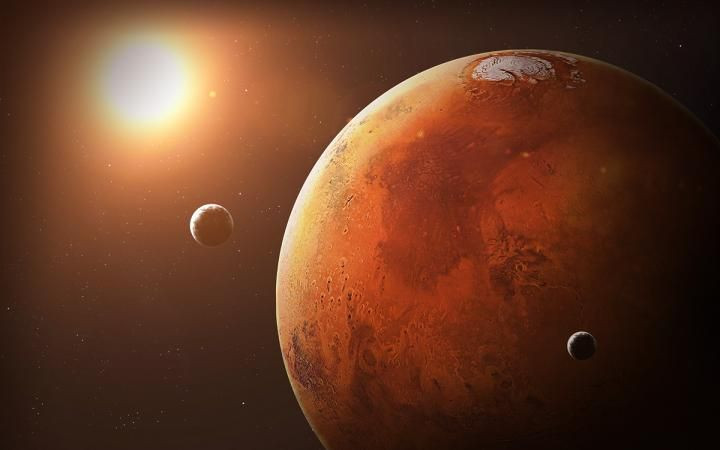Aliens On Mars: Bacteria May Survive Underground For Millions Of Years

Tiny organisms living below the surface of Mars could potentially survive for millions of years, scientists have suggested, potentially offering hope to alien lovers that there could be extraterrestrial life hiding underneath the planet’s red exterior or elsewhere in the universe.
The team studied how hardy microbes are in the face of gamma radiation, which can be dangerous on Mars because that planet does not have the cushy, protective atmosphere that Earth does. To mimic the Martian setting, the researchers conducted their tests in a climate chamber under low temperatures, low air pressure and “dehydration conditions,” according to a study in the journal Extremophiles. Their goal was to figure out whether Earth microorganisms could survive long-term in a frozen state below the Martian surface during “constant absorption and accumulation of the gamma radiation dose.”
Those organisms fared fairly well: Even after the radiation, the cells remained at high levels and were still capable of performing metabolic activity.
And the deeper microorganisms would go beneath the surface, the less exposure they would have to radiation, meaning their survival rates could increase with depth. About 6.5 feet down, they might be able to live for more than 3 million years, and they could potentially survive for 20 million years when they are roughly 16 feet down.
“Investigated microbial communities had shown high resistance to a simulated Martian environment,” the paper said. “The results of the study testify that long-term preservation of microbial life inside Martian permafrost is possible.”
According to the researchers, knowing the limit of how much radiation the cells can handle before they are destroyed will be important in picking places to explore, developing different methods to search for alien life and planning other missions.
“Until now, no one knew to what extent microorganisms can resist such extreme factors,” Lomonosov Moscow State University said in a statement. “By finding out the limits, scientists can assess the possibility of microorganisms and biomarkers surviving in various objects inside the solar system.”
The findings about microbes’ ability to persevere underground on Mars could be good news to people who have been disappointed to find how inhospitable the surface is. Previous research has suggested life cannot last above ground on Mars — scientists reported earlier this year that some of the most common bacteria on Earth dies when the elements on the Martian surface interact with radiation to make a killer mixture.
The new research also showed there could be different kinds of bacteria that are more resistant to the harsh conditions on Mars than others. Some of those bacteria have previously been found to outlast ultraviolet radiation on Earth, the university explained, “and their DNA is well-preserved in ancient permafrost through millions of years.” That potentially could be significant in the search for extraterrestrial life on Mars.
“In a nutshell, we have conducted a simulation experiment that well covered the conditions of cryoconservation in Martian regolith,” Lomonosov MSU researcher Vladimir S. Cheptsov said in the statement, with the word “regolith” referring to the loose dust and soil atop the rock on Mars. “Taking into account the intensity of radiation in the Mars regolith, the data obtained by us makes it possible to assume that hypothetical Mars ecosystems could be conserved in anabiotic state in the surface layer of regolith (protected from UV rays).”
© Copyright IBTimes 2025. All rights reserved.



















